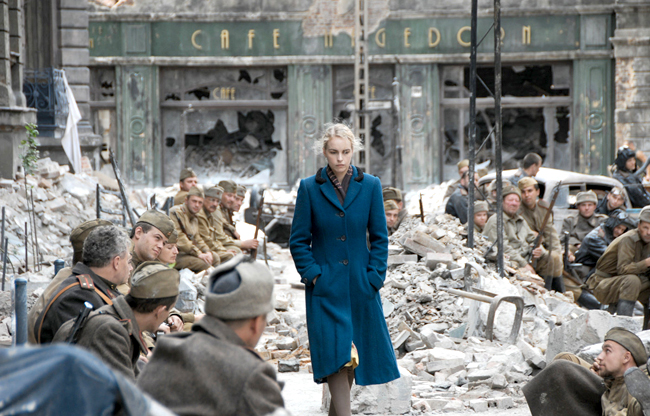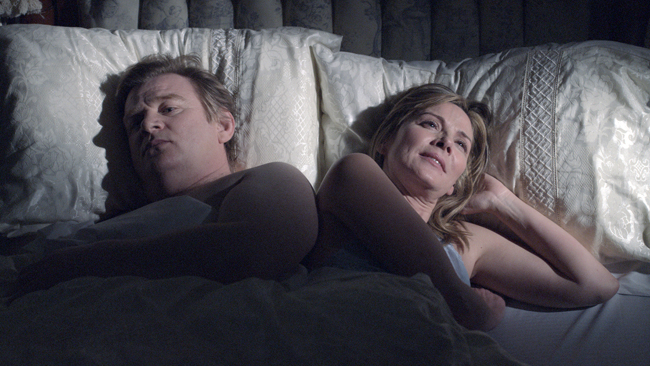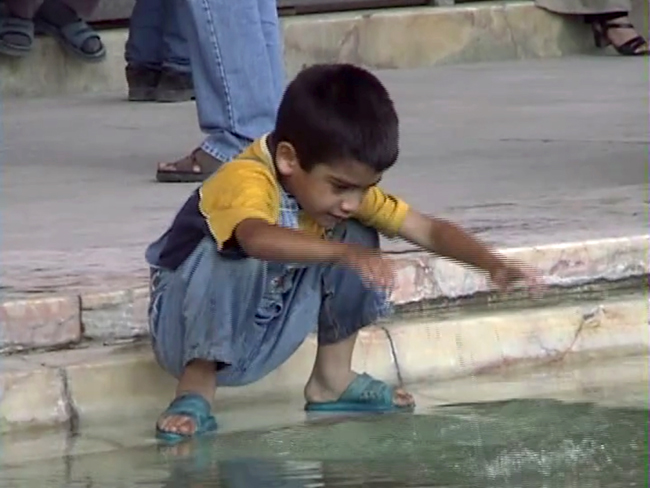|
Reviews of Recent Independent, Foreign, & Documentary Films in Theaters and DVD/Home Video

10th Annual Film Comment
Selects What does rape look like in war? Can a victim even feel love for the perpetrator? While the world today points a horrified finger at rape as a tool of war in Bosnia and the Congo, A Woman in Berlin frankly looks back to the spring of 1945 when the Russians entered the bombed-out city as conquering heroes out for revenge—then companionship. Its source is the anonymous, forthright diary published in the 1950’s to shock and scorn in East Germany, a country under pressure to praise the liberators, and reprinted after the author’s death in 2001 to a more sympathetic readership. This searing film is one of the 19 local premieres from first-timers to touted directors (including Kathryn Bigelow and Philippe Garrel) championed by the editors of the bi-monthly Film Comment magazine of the Film Society of Lincoln Center. (The following films were screened to the press.) Extraordinarily, director Max Färberböck, in adapting the diary, creates complex, three-dimensional men and women, Germans and Russians, who are each victims of political propaganda and the horrors of a brutal, total war. The diarist (Nina Hoss of Yella) realizes that with her multilingual skills she can negotiate some strategic protection for her and her neighbors, providing a modicum of carnal consent and material benefits during the weeks of sexual assaults. As the war grinds to an end, the Russians gradually differentiate into individual, lonely men with their own war stories and dreams, particularly swaggering Roman Gribkov as the shrewd Captain Anatol and the charismatic Yevgeni Sidikhin (a TV star in Russia) as the multi-layered Major Andrej. Strand Releasing is planning theatrical distribution later this year of this striking addition to the continuing reexamination of the official story of World War II in the movies.
O’Leary’s fall from the top of the corrupt Dublin business world to the bottom of a homeless shelter and asylum would seem exaggerated if the current economic crisis wasn’t scratching at the theater door. The timely social commentary constantly playing out in the background makes O’Leary’s self-realization more convincing. Though made in Ireland three years ago, the world recession has made this suspenseful film bitingly relevant beyond the local problems of the maiming of “The Celtic Tiger,” as the roaring Irish economy was once called, and Outsider Pictures may yet distribute it more widely. In The Mugger, the respectable older man in the suit hanging around outside private schools in Buenos Aires almost looks like he fits in, and his familiarity with the schools and their routines is almost reassuring. But Arturo Goetz’s mesmerizing performance turns on a dime over the course of one morning, changing from pleasant to ruthless, wily, desperate, and even bored. As his shocking actions belie his appearance, we look for cues to excuse his criminal behavior. While the titular character’s motives and coincidental details leave a few head-scratching holes for viewers to argue about, debut Argentinean writer/director Pablo Fendrik keeps ratcheting up the tension. Cinematographer Cobi Migliora‘s exciting camera work recalls the real-time anxiety in the Filipino thriller Cavite.
|


